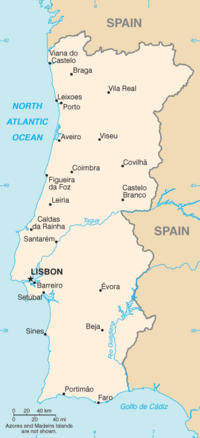
Photo from wikipedia
The present-day human footprint is traceable in all environments. Growing urban centers, tourism, agricultural and industrial activities in combination with fishery, aquacultures and intense naval traffic, result in a large… Click to show full abstract
The present-day human footprint is traceable in all environments. Growing urban centers, tourism, agricultural and industrial activities in combination with fishery, aquacultures and intense naval traffic, result in a large output of pollutants onto coastal regions. The Algarve shelf (Portugal) is one exemplary highly affected coastal system. With this study the contemporary pollution was followed in eighteen offshore surface sediment samples. Heavy metals (e.g., Cr, Pb, Cu, Hg) and organic contaminants, such as linear alkylbenzenes, dichlorodiphenyltrichloroethane metabolites, polycyclic aromatic hydrocarbons, and hopanes, have been identified and quantified, that pose hazardous effects on the marine environment and biota. This study correlates spatial distribution patterns with the pollutant composition, potential sources and pathways, each sample's grain size, and local influences, such as discharging river systems and ocean currents. This study presents a blueprint-study that allows the methodological adaption to new shelf systems with regionally different ocean current-driven distribution patterns of anthropogenic pollutants.
Journal Title: Marine pollution bulletin
Year Published: 2022
Link to full text (if available)
Share on Social Media: Sign Up to like & get
recommendations!